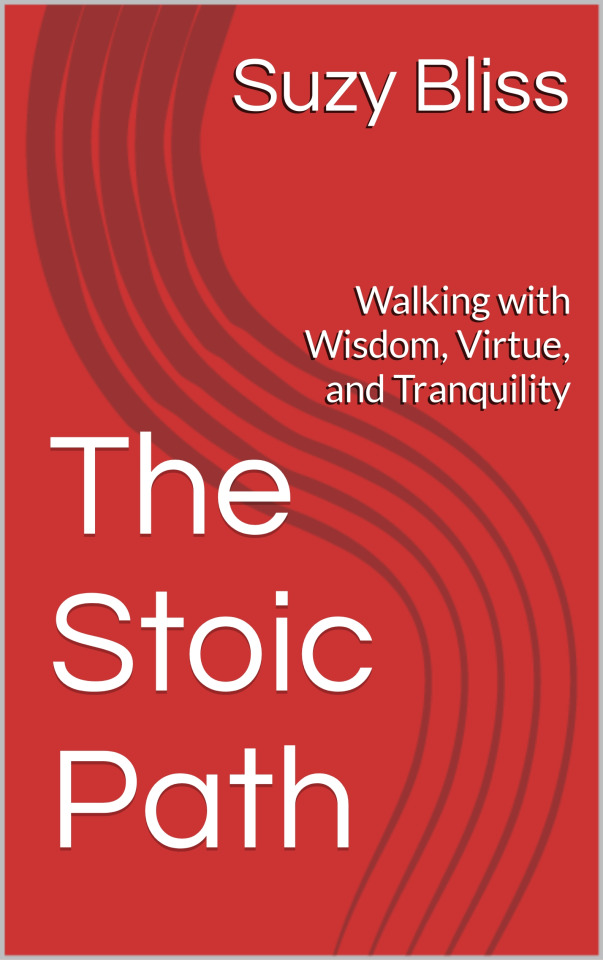Text
The Cellular Fountain of Youth: How Meditation May Slow Aging

Your cells contain protective caps on the ends of chromosomes called telomeres. Each time cells divide, telomeres shorten a bit until they become so short that cells stop functioning and die. Shortened telomeres are associated with faster onset of age-related diseases and mortality. An enzyme called telomerase can preserve or lengthen telomeres, but its activity normally declines with age.
Research now suggests that meditation may help slow part of cellular aging by preserving telomere length. As more evidence emerges, meditation holds promise as a simple, accessible longevity boosting behavior.
The Cellular Clock: Telomeres and Aging
Telomeres safeguard the ends of chromosomes during cell replication. With each division, a small section fails to copy and the telomere shortens. When telomeres become critically short, cells enter senescence. Loss of telomeres is linked to genomic instability and cell death.
Shortened leukocyte (white blood cell) telomeres predict higher risks for cancer, cardiovascular disease, dementia and premature mortality – likely indicative of whole body cellular aging. Multiple lifestyle factors are known to accelerate telomere attrition including poor diet, inactivity, smoking and chronic stress.
Can Meditation Slow Cellular Aging?
A growing body of evidence suggests meditation helps preserve telomere length and offset age-related cellular declines. Expert meditators with years of experience tend to have longer telomeres on average versus non-meditator controls. After just one month of intensive meditation training, previously sedentary adults showed increased telomerase activity.
Both telomere length maintenance and boosted telomerase link meditation to more youthful cellular profiles. Researchers propose meditation’s stress-alleviating, anti-inflammatory and emotion-regulating effects support cellular vitality.
Blunting Stress Reactions: Less Cortisol Exposure
Chronic psychological stress exposure activates fight-or-flight pathways, flooding cells with inflammatory stress hormones and accelerating telomere shortening. Meditation calms these pathways, reducing cortisol production. Less inflammation coupled with lower replicative demand from weakened stress responses allows cells and telomeres time to recover.
Potential Anti-Aging Pathways
Studies report meditation also increases telomerase production, the enzyme adding base pairs to telomere ends. Anti-aging activity may arise from growth hormone and serotonin cascades activated by vagus nerve stimulation during meditation.
Changed Outlooks, Changed Cells
By cultivating equanimity and self-compassion, meditation trains acceptance of unwanted thoughts and emotions. This letting go circumvents cellular damage caused by sustained stress reactions over external uncontrollables. Eased psychological distresses may propagate to more stable telomere length via cellular pathways sensitive to emotional states.
Health span: Extending Years of Healthy Vitality
If meditation helps maintain telomere length across years of practice, deteriorating health from cellular aging may effectively be slowed. Preserving physiological reserve later into life could compound benefits – translating not just to longevity but also increased health span.
Maximizing Cellular Benefits: Start Meditating Early
Initiating meditation earlier in adulthood appears optimal for maximizing telomere length preservation across decades of practice. However, those adopting meditation later still benefit. After short-term training previously sedentary adults showed boosted telomerase versus baseline, offering a buffer against age-related telomere loss.
Combining meditation with regular exercise, a healthy diet and restorative sleep constitutes a multi-layered longevity promoting lifestyle regime. Even small daily meditation sessions may compound gains down to the cellular level.
The Bottom Line
Your cells are listening! Ancient mindfulness practices that lower psychological stress may communicate signals of safety to cells: easing metabolic strain, quieting inflammatory burdens and providing restorative balm to telomeres. Carving out just minutes daily to meditate holds potential to lengthen health and vitality through cellular aging slowed.
Reference:
The effects of meditation on length of telomeres in healthy individuals: a systematic review
The effects of meditation on length of telomeres in healthy individuals: a systematic review - PMC (nih.gov)
Link for Add Free Meditation Videos.
Tagged "meditation" | Self Help Champion
0 notes
Text
#booksummary | Navigating Narcissism: A Compassionate Guide to Nonviolent Communication by Suzy Bliss

Navigating relationships with narcissists often feels like an emotional rollercoaster ride. Their behaviors mystify and frustrate even as they charm and manipulate us. It's easy to get hooked by narcissists’ provocations, spinning us into cycles of reactivity. Fixating on diagnosing narcissistic personality disorder risks further polarization demonizing them as toxic or disordered. Yet beneath their manipulative masks, narcissists harbor profound wounds and unmet needs triggering these defensive adaptations.
Rather than pathologize narcissism, clinical psychologist Marshall Rosenberg’s revolutionary Nonviolent Communication (NVC) approach provides relatable insights revealing narcissists’ hidden vulnerability. Beyond understanding origins compassionately, NVC offers practical skills for improving connections collaboratively. Its elegantly straightforward components teach observing situations objectively, identifying feelings arising, connecting feelings to universal human needs and making clear requests to enrich life together. This process short-circuits reactive habits eroding relationships by establishing shared commitment to mutual understanding.
In her book “Navigating Narcissism,” Suzy Bliss skillfully translates NVC techniques into specialized guidance for defusing narcissistic emotional landmines. With psychological insight and pragmatic support strategies grounded in empathy, she charts a path beyond frustration into flow. Her compassionate adaptation of Rosenberg’s principles provides keys for finally improving even adversarial relationships stagnated by narcissistic patterns. By replacing judgment with insight and meeting reactivity with thoughtful responding, we learn relating anew through consistency practicing this consciousness.
Navigating Narcissism: A Compassionate Guide to Nonviolent Communication - Kindle edition by Bliss, Suzy. Health, Fitness & Dieting Kindle eBooks @ Amazon.com.
Chapter 1 - Understanding Narcissism

This chapter defines narcissistic personality disorder (NPD) according to the DSM-5 diagnostic criteria. It outlines common traits of narcissists including grandiosity, entitlement, lack of empathy, envy, arrogance, and fragility. The text explains narcissism develops as a coping mechanism to defend against emotional wounds and unmet attachment needs from childhood. It emphasizes seeing beneath frustrating narcissistic behaviors to the vulnerability and suffering underlying them.
Chapter 2 - Empathy vs Reactivity

This chapter contrasts empathy and reactivity as responses to narcissists’ provocations. It presents Nonviolent Communication’s (NVC's) process for calming our own reactivity by identifying the feelings and unmet needs triggered within us. Taking responsibility for our internal experience is essential for sustaining empathy amid narcissistic dynamics. The text discusses common reactive habits like judging, criticizing, blaming, demanding and diagnosing others, instead recommending the NVC practice of compassionate self-awareness.
Chapter 3 - Getting Needs Met Respectfully
This chapter applies NVC principles for decoding seeming criticism, judgments and demands from narcissists to reveal the unmet needs expressed through these behaviors. Rather than hearing messages as attacks, the text advocates empathizing with the underlying feelings and needs being communicated, however unclearly. Nonviolent communication involves restating these unmet needs and making clear, positive requests to address them cooperatively. This reduces defensiveness and establishes shared commitment to fulfilling universal human needs equitably through dialogue.
Navigating Narcissism: A Compassionate Guide to Nonviolent Communication - Kindle edition by Bliss, Suzy. Health, Fitness & Dieting Kindle eBooks @ Amazon.com.
Chapter 4 - Expressing Feelings Constructively
This chapter offers guidance on NVC's process for identifying and articulating feelings clearly and responsibly. It discusses distinguishing feelings from thoughts, stories or excuses. Expressing feelings vulnerably yet non-violently establishes emotional honesty as the foundation for productive conflict resolution. Accurately naming feelings calms distress because it grounds us in the present moment instead of spinning reactive narratives. The text emphasizes developing emotional vocabulary and disclosing feelings tentatively to invite additional perspective.
Chapter 5 - Active Listening Skills

This chapter focuses on NVC listening tools for accurate empathy. It explains three primary active listening modes: mirroring messages back verbatim to demonstrate engagement and check understanding; paraphrasing the essence of messages to interpret meaning responsibly; and asking clarifying questions respectfully to deepen mutual comprehension. Developing active listening capacities allows reacting less and understanding speakers more fully -- core prerequisites for compassionate conflict transformation.
Chapter 6 - Acknowledging Responsibility
This chapter discusses acknowledging personal responsibility in conflict compassionately. Self-empathy plays a key role: reflecting to identify our own feelings, needs and contributions to co-created problems gives grounded clarity for taking responsibility sensitively. Because defensiveness blocks accountability, anticipating and empathizing with defensive reactions opens space for voluntary vulnerability. Seeing our part also fosters distinguishing which aspects of difficulties belong solely to others. Exploring responsibility together demystifies conflicts and builds cooperation.
Chapter 7 – Requesting Positively
This chapter presents NVC guidance on formulating requests clearly to improve mutual understanding. Requests phrased positively in actionable language allow willing compliance. Asking for flexibility from others with empathy for the effort involved increases success. Willingness stems from assessing personal readiness to give what we request. The text discusses working through situations where needs conflict collaboratively to generate mutually agreeable solutions. This process aligns relationships through shared goodwill.
Navigating Narcissism: A Compassionate Guide to Nonviolent Communication - Kindle edition by Bliss, Suzy. Health, Fitness & Dieting Kindle eBooks @ Amazon.com.
Chapter 8 - Offering Appreciation

This chapter discusses the vital role appreciation plays in nourishing healthy narcissistic self-esteem to modulate problematic behaviors. It shares suggestions for crafting sincere appreciation messages highlighting specific actions, qualities or experiences valued. NVC emphasizes receiving appreciation graciously by connecting acknowledgments to internal feelings and needs met - this vulnerability fosters self-compassion to heal shame. Developing consistent appreciation practices counteracts narcissistic wounds denying worth. Affirming each other’s value consciously evolves co-dependent relationship patterns.
Chapter 9 - Responding Compassionately to Criticism
This chapter applies NVC empathy skills for receiving criticism from narcissists by identifying unmet needs expressed through frustrations. It outlines steps for discussing difficult impacts on ourselves or others respectfully without evoking defensiveness. By demonstrating willingness to hear differing perspectives non-reactively, the text advocates agreeing to revisit disagreements later once intense emotions have calmed. This constructive conflict process builds mutual faith in good intentions supporting collaborative problem solving.
Chapter 10 - Staying Grounded
This final chapter focuses on sustaining emotional equilibrium when navigating intense narcissistic relational dynamics over time through self-empathy, self-compassion and realistic hope. It emphasizes regularly checking internal guidance systems overridden during co-dependent coping. Reconnecting to needs and limits allows course correcting crossroads. The text urges readers to acknowledge if compassion reaches its healthiest boundaries, accepting relationships may ultimately need redefining or releasing - while still holding faith in forgiveness. Sustaining courage and vision keeps change possible.
Conclusion
Despite narcissists’ frustrating defenses, remembering underlying wounds humanizes them. Their extreme behaviors evidence not inherent toxicity but rather profound disconnection from self-love – we all share basic needs to feel valued. Demonstrations provoking reactive punishment will not transform this alienation into security. Yet withdrawal leaves longing untouched. NVC offers a middle way, upholding engaged presence with accountability.
The skills this book shares for improving narcissistic relationships require dedication and patience; their mere understanding brings no lasting change. Only through vulnerable communication, consistently choosing empathy over projection, do we embody the transformation we envision. In this sense, Rosenberg reminds NVC provides not fixed destination but ongoing process. As we faithfully listen, understand, share and request cooperatively amid narcissism’s storms, we heal by walking – one step at a time. With open hands and hearts, the lifelong journey itself expands soul.
Navigating Narcissism: A Compassionate Guide to Nonviolent Communication - Kindle edition by Bliss, Suzy. Health, Fitness & Dieting Kindle eBooks @ Amazon.com.
0 notes
Text
#booksummary | Happy Sexy Millionaire: Unexpected Truths About Fulfilment, Love and Success

In an age of curated social media feeds and societal pressure to "have it all," many millennials feel lost in their quest for happiness, love, and success. Steven Bartlett's unconventional self-help book "Happy Sexy Millionaire" offers a path to genuine fulfillment amidst the distorted ideals and expectations around us. Drawing on science-backed insights from psychology and his own unusual journey to self-made millionaire status, the author provides a down-to-earth guide for blocking out pervasive media narratives to realize what truly matters.
Bartlett argues that by recognizing our intrinsic self-worth, we can escape an endless chase for validation through status, wealth, and unattainable visions of "perfect" lives propagated through society. Instead, we can focus inward to tap into what genuinely aligns with our fulfillment versus what we assume should make us happy. This emphasis on self-understanding and meaning fosters the right mindset to pursue ambitious goals for their own sake - as part of life's ongoing "infinite game" rather than a destination we arrive at and are finished.
Along the way, Bartlett reshapes worn-out notions of success, passion, and even concepts like quitting and chaos with refreshing nuance fitting for disillusioned yet determined generations. While acknowledging harsh realities around social media’s distortions, he brings levity and compassion to discussing societal limitations. Overall, "Happy Sexy Millionaire" offers liberation from others’ narratives about happiness to blaze your own trail.
Key Points from Happy Sex Millionaire.
The Toxic Narratives of Society
Today's media, social media, and societal conventions lead us down an unfulfilling path obsessed with money, attractiveness, fame, and chasing "happiness." These toxic narratives convince us we are not enough.
The Paradox of Happiness
Happiness is an "infinite game" without an end. Life is perpetual until death - there's no finish line. The paradox is you have to stop chasing happiness to find it. No one is born feeling inadequate - society ingrains this through incessant messaging.
The Destructive Effects of Contrast
Value relies on context. Social media unrealistically makes others seem happier and better. Our brains can't handle the constant flood of idealized images that make the good seem inadequate. We have to reduce comparisons and follow real people.
Society's Fairy Tales
Society propagates the fairy tale of "having it all" - changing the world, following our passion. This disregards real-life complexity and the need to make trade-offs based on what matters most.
The Art of Quitting and Focus
Quitting allows us to leave the wrong things and focus on what's right. Composure stops poor emotional decisions. Believing external factors hold you back discourages agency - the only validation is self-validation.
We Are Enough
The false belief that achievements make us worthy fuels an endless chase trying to prove our value. We have intrinsic worth that accomplishments can't change. Realizing you are enough allows goals for their own fulfillment versus validation.
Bartlett's Own Story
Bartlett founded a hugely successful social media agency by 25, becoming a CEO worth $300 million. He rejects glorifying wealth and status, retaining company control rather than sell out.
Science-Backed Insights
Bartlett draws on research about psychology, decision-making, and motivation. Studies show how social media exploits confirmation bias. He replaces assumptions in societal ideals with science-backed insights on meaning.
A Guide to Genuine Fulfillment
Bartlett provides a pragmatic guide to fulfillment without chasing unattainable ideals sold through media narratives. He redefines success, love, and happiness for disillusioned yet ambitious generations. His uncommon advice promotes self-validation and playing life's "infinite game."
Final word
For generations disoriented amid society’s voids between idealized visions and reality, Steven Bartlett provides a gritty yet uplifting guidebook for genuine fulfillment. By confronting the false promises in media representations of wealth, attractiveness, and success, he carves an alternate route aligned with what scientifically fosters meaning. Bartlett redeems the complexity of modern lives from the tyranny of chasing “perfect,” restoring a sense of adventure to the ongoing experience between life’s beginnings and ends.
With secular wisdom steeped in psychological research, "Happy Sexy Millionaire" gives millennials fluent in hyper-connectivity an antidote to digital disillusionment. Fundamentally, Bartlett galvanizes us to march to the beat of our own drummer - defining yourself by self-knowledge versus what any news feed or channel decides. In an age where trajectories seem beyond control, this book empowers rebooting your compass to discover the fulfillment within. The explored territory isn't always pretty or comfortable, but Bartlett convinces us the trek back to genuine purpose will prove a life less ordinary.
0 notes
Text
#BookSummary | 8 Rules of Love by Jay Shetty

We’re attracted to beauty, but attraction fades over time. When attraction matures into love and receives proper care, a deeper beauty emerges. Love requires effort to build intentionally rather than leaving it to chance.
This book draws lessons about cultivating love from ancient Hindu scriptures called the Vedas. The Vedas depict four stages of life for learning the principles of love: preparing for love, practicing love, protecting love, and perfecting love.
Amazon.com: Wired for Love: Understanding the Neuroscience Behind Healthy Relationships eBook : Bliss, Suzy: Kindle Store
Preparing for Love
Before loving another, love yourself. Rule 1 covers nurturing qualities like compassion, empathy, and patience within yourself. Rule 2 involves examining past relationships to avoid repeating mistakes.
Practicing Love
Love yourself while also loving others. Rule 3 offers guidance on discerning when you’re in love. Rule 4 is about learning and growing alongside your partner. Rule 5 focuses on setting priorities and managing time and space in the relationship.
Protecting Love
Seek peace after heartbreak, loss, or when family obligations reduce care for your partnership. Rule 6 presents a method to resolve conflicts. Rule 7 teaches when to leave a relationship and how to cope afterward.
Perfecting Love
Strive to love every person in your life. Rule 8 is about cultivating love universally.
Amazon.com: Wired for Love: Understanding the Neuroscience Behind Healthy Relationships eBook : Bliss, Suzy: Kindle Store
Part 1: Solitude — Learning to Love Yourself
Rule 1: Let Yourself Be Alone
Loneliness hurts, but solitude enlightens. To transition from loneliness to solitude, undergo three stages: presence, discomfort, and confidence.
Presence means noticing your feelings, choices, priorities, strengths and weaknesses. Your values matter too, since shared values enable relationships.
Discomfort refers to inadequacy felt when you lack company. Confidence is self-assurance derived from appreciating your abilities. Solitude reveals insight about patience and self-control.
We’re taught that an “other half” will complete us. But some problems must be solved alone. Don’t expect a partner to instantly fix you. Bring gifts, not gaps, into partnerships. Don’t recruit someone to fill your emotional voids.
Rule 2: Don’t Ignore Your Karma
Karma is the law of cause-and-effect. It teaches rather than punishes. Our experiences create impressions that shape reactions, enabling us to reinforce or alter patterns — the cycle of karma.
Early impressions inform our concepts of love. Media and past relationships also contribute. We give too much credence to fledgling relationships when judgment is compromised.
We learn about relationships from parents, media, and personal history. Yet these influences lead us to choose partners that evoke past patterns. Ideally, parents would demonstrate that love means protection, loyalty and sacrifice. Regardless, they give us both gifts and gaps, which guide our relationship choices. Rather than blaming others, take responsibility for emotional baggage.
Amazon.com: Wired for Love: Understanding the Neuroscience Behind Healthy Relationships eBook : Bliss, Suzy: Kindle Store
Part 2: Compatibility — Learning to Love Others
Rule 3: Define Love Before Professing It
The meaning of “love” depends on context and individuals. We rush to proclaim love without considering implications. Some renew vows yearly while others split after uttering vows. Clearly define love to clarify expectations.
Phase One: Attraction
Attraction is the impulse to connect with someone as you become vulnerable with each other. Try the three-date framework to assess compatibility. Devote each date to evaluating one area: personality, values or ambitions.
Phase Two: Dreams
Here you actively craft a robust relationship. False expectations about ideal partners will disappoint you. Imagining endless prospects online promotes disposable relationships. Every person has unique quirks so focus less on finding the perfect match and more on handling difficulties together.
Build intimacy through daily connections rather than fantasizing about the future.
Amazon.com: Wired for Love: Understanding the Neuroscience Behind Healthy Relationships eBook : Bliss, Suzy: Kindle Store
Phase Three: Struggle and Growth
Challenges will emerge. Distinguish which issues can be resolved versus accepted. Assess whether to leave, commit to progress, or languish. Deal breakers may surface.
Phase Four: Trust
Overcoming trials together enables growth and trust. Trust accrues gradually as behaviors reinforce professions. Nurture trust actively.
Different types of trust include: physical safety, mental alignment and emotional vulnerability. Communicate which you prioritize.
Rule 4: Your Partner Is Your Guru
Gurus compassionately impart wisdom without judgement. In relationships, take turns playing teacher and student to each other.
The objective is expanding your identity by integrating a partner’s attributes. Seek growth, not control. Gurus support students’ goals selflessly. Adopt humility to enable learning. Balance your identity while remaining open.
Rule 5: Purpose Comes First
Identifying your unique contribution or “dharma” clarifies priorities. Construct your purpose by determining where passions and talents converge. Eliminate distractions blocking your aims. Test ideas to find the best fit, then establish routines to thrive. Communicate when you struggle. Savor progress over outcomes.
Enable your partner’s search for purpose while pursuing your own. Coordinate if you have children or overlapping callings.
Part 3: Healing — Learning to Love Through Struggle
Rule 6: Win or Lose Together
Disputes naturally emerge, even among well-matched partners. Misconstrue conflict as abuse and intolerable. Abuse has many forms: physical, emotional, sexual, financial, digital and stalking.
Arguments fall into three categories:
Pointless: no resolution sought
Power: dominating the other
Productive: overcoming issues
Identify the conflict’s core: social, interpersonal or inner turmoil. Common triggers are sex, money and parenting.
Venting, hiding and exploding represent different fight reflexes. Seek to resolve arguments maturely.
Steps towards peace include:
- Scheduling time and location
- Mindful expression
- Anger management
- Committing to change
- Owning mistakes
If no compromise emerges, carefully reconsider the partnership.
Rule 7: You Don’t Break in a Breakup
Neglect deteriorates love. Abuse, cheating, disinterest and inertia ravage relationships. Never accept abuse.
Infidelity often permanently damages trust. Rebounding distracts from inner work.
Incompatible values surface through poor communication. Signs include feeling drained, withdrawing intimacy and neglecting the bond.
Relationships require maintenance. Interactions generate positive, neutral or negative energy. Low vibrations come from criticism, gossip and pessimism whereas high vibrations arise through inspiration, playfulness and discovering commonalities.
After fostering intimacy, choose whether to elevate, separate or stagnate the relationship. An elevation pathway moves from intolerance to acceptance.
Staying to avoid loneliness benefits neither party. You possessed value before the relationship and will after. After a breakup, invest in personal growth. Your independence will attract fulfilling connections.
Amazon.com: Wired for Love: Understanding the Neuroscience Behind Healthy Relationships eBook : Bliss, Suzy: Kindle Store
Part 4: Connection — Learning to Love Everyone
Rule 8: Love Again and Again
Strive to cultivate loving bonds widely. Express generosity through:
- Understanding
- Belief
- Acceptance
- Appreciation
Prioritize nurturing intimacy with your inner circle while emanating goodwill towards all. The more you give, the more love you’ll receive.
Key Takeaway from the book “8 Rules of Love”:
The central message is that love requires effort and intention to build and maintain. It starts with cultivating self-love, self-awareness, and personal growth. From there, you can develop the skills to foster healthy, mutually fulfilling relationships.
Some of the key ideas include:
- Learn to embrace solitude. Overcome loneliness and develop compassion and emotional intelligence on your own before seeking a partner.
- Examine past relationship patterns to avoid repeating mistakes. Take responsibility for your own gaps rather than expecting someone to complete you.
- Clearly define love and develop realistic expectations before declaring love. See your partner as a teacher, not a savior.
- Make your individual purpose a priority while supporting each other’s growth. Create positive energy through shared activities and communication.
- Address conflicts maturely as a team. Reconcile differences if possible or reconsider if core values conflict.
- If you split up, focus on self-care rather than rushing to fill the void. Cultivate confidence on your own.
The ultimate goal is to love fully, leading with generosity and empathy towards your partner and community. The more goodwill you cultivate, the more fulfilled you will feel.
Discover more of my published works on topics like Stoicism, parenting, relationship, self-improvement and mindfulness by visiting my Amazon author page at
https://amazon.com/author/suzybliss
Get inspired. See more wisdom daily on our YouTube channel and blog.
Self Help Champion — YouTube
https://selfhelpchampion.com/
0 notes
Text
#booksummary | The Art of Making Sh*t Happen: A Guide to Executing Ambitious Visions by Suzy Bliss

The Art of Making Sh*t Happen is a practical guide to helping people struggling to turn ambitious visions and goals into reality. Despite intelligence and passion, most people face an 'execution gap' in bringing big ideas to fruition due to lack of frameworks for planning, productivity, motivation and working effectively.
This book serves as a masterclass consolidating proven execution principles used by prolific creators and industry leaders to actualize audacious aims without burning out. Whether leading a movement, building a business, writing a book or launching a product, tangible achievement requires efficiently engineering incremental progress through disciplined systems, constructive habits and optimal routines.
The book synthesizes both timeless execution principles and emerging neuroscience explaining common struggles to convert inspiration into action. Readers gain concrete skills to massively upgrade productivity, align work to vision and purpose, engineer goals and systems, activate focus, crush internal resistance and sustain energy over long horizons.
The Art of Making Sh*t Happen - Kindle edition by Bliss, Suzy. Health, Fitness & Dieting Kindle eBooks @ Amazon.com.
5 Key Execution Domains
The book utilizes an original R.E.A.C.H. model encompassing five key domains required for achievement:
R - Refocus Vision & Purpose
E - Engineer Systems & Habits
A - Activate Attention & Focus
C - Crush Internal Resistance
H - Harmonize Energy & Recovery
Let's overview how the chapters equip strengths across these execution domains:
Part 1 - Refocus Vision & Purpose
Chapters here reconnect work to meaning and passion by clarifying aligned visions and uncovering sources of deeper purpose granting resilience against frustrations. Case studies showcase effective visions/purpose across leaders.
Part 2 - Engineer Systems & Habits
Applies goal setting frameworks and planning rituals facilitating consistent execution through research-backed tools like weekly plans, daily checklists and project blueprints. Also covers efficiency boosting systems governing email, calendar, file organization.
Part 3 - Activate Attention & Focus
Optimizes concentration by identifying and eliminating common personal distraction triggers while teaching focus habit formation plus sacred workspace design enabling deep work.
Part 4 - Crush Internal Resistance
Builds grit to power past motivational obstacles like procrastination, uncertainty and overwhelm using science-backed motivational tactics and accountability systems keeping progress locked in.
Part 5 - Harmonize Energy & Recovery
Ensures sustained achievement by physically, mentally and emotionally nurturing personal energy through burnout prevention and holistic stress reduction.
Chapter-By-Chapter Summary
The Art of Making Sh*t Happen - Kindle edition by Bliss, Suzy. Health, Fitness & Dieting Kindle eBooks @ Amazon.com.
Part 1 - Dream It - Vision & Purpose Discovery
Chapter 1: Define Vivid Visions
Clarifies values, passions and emotionally energizing vision statements balanced with pragmatic action plans leveraging natural strengths/talents. Provides vision case studies.
Chapter 2: Discover Core Purpose
Connecting work to deeper meaning/service provides intrinsic fuel powering past frustrations. Assesses work alignment against science-backed purpose quadrants of meaning, positive impact, sustainability and influence. Showcases purpose discoveries through failures, spiritual callings and relentless inquiry.
Part 2 - Plan It - Goal Setting & Execution Systems
Chapter 3: Strategic Goal Setting
Applies S.M.A.R.T goal setting framework balancing long and short-term waypoints. Architects navigational goal hierarchies from 10-year visions down into quarterly objectives, weekly priorities and daily checklists.
Chapter 4: Proactive Planning
Elevates effectiveness through frameworks for weekly plans, daily checklists and project blueprints leveraging focus time blocks, distraction avoidance and important task identification fueling deep work.
Chapter 5: Organizational Systems
Conquers overwhelm by implementing systems governing email, calendar, cloud/paper file organization, desktop layouts and cross-platform synchronization.
Part 3 - Focus It - Attention & Concentration Optimization
Chapter 6: Minimize Distractions
Pinpoints environmental, digital and internal distraction triggers uniquely derailing productive flow state. Offers tactics like website blockers, muting notifications and sacred workspace design granting insulation.
Chapter 7: Harness Hyperfocus
Activates temporary but highly productive hyperfocus flow state by assessing characteristics of tasks best inducing intensity like passion projects, environmental cues, energy management and timer focus. Encourages calendar blocking for deep creative work.
Part 4 - Crush It - Diluting Procrastination & Cultivating Diligence
Chapter 8: Ruthless Prioritization
Discerns where effort placed yields disproportionate results using filters assessing vision alignment, leveraging strengths, conferring competitive advantage and scalability factors. Strategic neglect of lower value work unlocks growth.
Chapter 9: Obliterate Procrastination
Diagnoses personalized root causes of procrastination like overwhelm, perfectionism, gratification preference and poor pacing across different culprit typologies. Offers science-backed tactics circumventing motivation obstacles.
Chapter 10: Manufacture Motivation
Manages inspiration across lengthy projects by aligning efforts to intrinsic motivators like passion/purpose and scheduling intermittent fun rewards/activities. Explores peer mastermind groups, progress trackers, public commitments and music/arts for motivation renewal.
Part 5 - Finish It - Sustaining Drive Over Long Horizons
Chapter 11: Consistent Execution
Prevents stalled progress by planning tools obstructing distractions, developing grit resilience against uncertainties/setbacks, reframing failures positively and reactivating origin purpose stories to avoid complacency during final miles. Promotes holistic self-care sustaining vision pursuit without burnout.
Final Word
The Art of Making Sh*t Happen promises to upgrade readers with concrete skills and wisdom enabling the actualization of ambitious visions through peak productivity unlocking disciplined incremental progress towards once seemingly impossible horizons.
The Art of Making Sh*t Happen - Kindle edition by Bliss, Suzy. Health, Fitness & Dieting Kindle eBooks @ Amazon.com.
1 note
·
View note
Text
The Neuroscience of Positive Emails at workplace

Email can often feel like a chore or a source of stress. The constant influx of messages in our inboxes makes it easy to dash off quick, thoughtless replies. However, we have an opportunity to spread more positivity, connection, and joy through our digital correspondence. Emails that spark positive emotions in the recipient can boost engagement, strengthen relationships, and even support mental and physical well-being.
Let's look at how we can intentionally create positive neurochemical reactions in others (and ourselves) through email.
Dopamine - The Motivation Molecule
Dopamine is released when we anticipate something positive. To tap into this feel-good neurotransmitter, use your emails to build excitement and share good news. For example, you might give someone a heads up about an upcoming award they are receiving or notify a client that you got approval on a project they're eagerly awaiting.
Giving praise and recognition also triggers dopamine releases. Be sure to call out accomplishments, progress, and anything else worthy of acknowledgment. A simple "Great job on the presentation yesterday!" can give someone an energizing dopamine boost.
Oxytocin - The Love Hormone
Oxytocin is the hormone that makes us feel bonded to others. You can spark its release through emotional authenticity and expressions of warmth. For instance, tell a colleague you appreciate their support on a difficult work project or let a friend know how much their friendship means to you.
Don't be afraid to be vulnerable by admitting challenges you're facing or sharing your insecurities. Being open can strengthen connections and trigger reciprocal caring feelings. Just be sure to keep it professional in work emails.
Serotonin - The Mood Booster
Serotonin regulates mood, calmness, and happiness. To increase this feel-good chemical in email recipients, express gratitude, send encouragement, and highlight positive traits you admire or appreciate about someone. Even a simple thank you note can surge someone's serotonin levels.
You can also boost serotonin by injecting humour and levity into your emails when appropriate. Share a funny meme, witty joke, or light-hearted anecdote to spark joy and laughter. Just take care to avoid inappropriate or offensive content.
Endorphins - The Pain Relievers
Endorphins relieve stress and enhance pleasure. Physical touch triggers their release, which we can't do through email, but you can evoke the same response using smiling emojis, affectionate words ("virtual hugs") and celebrating victories. Expressing pride in someone's accomplishments can also produce endorphins.
Keep the "feel good" neurotransmitters flowing by regularly taking small actions to spread positivity, appreciation, and care through your digital correspondence. The effects on you, your recipients, and your relationships can be profound. With some thoughtfulness, your emails can boost moods, deepen connections, and make someone's day.
www.selfhelpchampion.com
0 notes
Text
Nonviolent Resistance Parenting: Ending the Coercion Cycle with Empathy

“Darkness cannot drive out darkness; only light can do that. Hate cannot drive out hate; only love can do that.” – Martin Luther King Jr.
Nonviolent resistance (NVR) is an approach to parenting that aims to improve child behaviours and the parent-child relationship through peaceful, loving connection rather than aggression, punishment or attempting to dominate. It applies the principles of nonviolent resistance used by Gandhi and Martin Luther King Jr. during social justice movements to family dynamics and situations with defiant, uncooperative or aggressive children.
The goal of NVR parenting is to establish order and cooperation in the family through unconditional love, empathetic two-way communication, and selective ignoring of undesired behaviours instead of enabling them through intense emotional reactions or conflict. It helps parents set reasonable limits while avoiding resorting to verbal and physical aggression that can often do more harm than good in addressing behavioural issues. Expert parenting coach, Haim Omer, pioneered the NVR approach as an alternative to techniques that risk eroding the child's self-confidence, escalating tensions or damaging the parent-child bond over time if misapplied.
NVR parenting can help with common issues like tantrums, noncompliance, aggression, schoolwork avoidance, chores/responsibilities, lying, dangerous misbehaviours and more, especially in children aged 5-15 years when limit-testing and defiance often peak. Implemented properly with realistic expectations over 6+ months, many families report dramatically improved cooperation, communication and family happiness from applying an NVR approach.
Understanding Nonviolent Resistance

At its core, nonviolent resistance (NVR) is focused on identifying goals, communicating clearly and appealing to the conscience of others to encourage cooperation over coercion. Rather than using verbal threats, physical aggression, or accepting manipulation - it uses peaceful resistance, reason and “moral ju-jitsu” to reveal the wrongdoing of the other party to encourage positive change from within.
In parenting, NVR means avoiding aggressive, dangerous discipline while still providing stability, order and proper socialization to children. Research shows harsh punishments, constant yelling or coping through total disengagement/neglect can negatively impact childhood development and parent-child bonds. But being over-permissive to misbehaviour also fails to set proper boundaries leading children to potentially take advantage and have future problems adjusting to rules of society when older. NVR balances both by focusing on emotional connection and supporting positive change.
Some of the core NVR parenting strategies include:

• Maintaining self-control even when provoked rather than reacting verbally or physically in anger when upset. Modelling ideal responses despite difficulty shows children how to regulate emotions properly.
•Taking a supportive yet resolute parental stance that communicates confidence in a child’s ability to cooperate without harsh threats or punishment
•Setting clear limits on unacceptable behaviour and having planned consequences like withdraw of attention/privileges if violations occur. But always reassuring love after discipline is carried out to maintain trust.
•Using reflective listening and empathetic dialogue to resolve tensions. Seeking cooperative solutions rather than forcing obedience to arbitrarily rules.
•Selectively ignoring mild misbehaviours that are provoked attempts for attention from parents or peers. Praise positive opposite behaviours instead.
•Reconnecting with warmth after conflict resolution self-corrects, not holding grudges over past incidents. Move forward positively.
The goal is to remain anchored in love and hope for cooperation rather than get swept into aggression and unhealthy power struggles. By responding calmly and empathetically - unhealthy behaviours lose their ability to emotionally manipulate parents who enable them. Children become empowered to self-correct through unconditional support rather than resentment at being dominated unfairly.
In contrast, NVR significantly differs from permissive parenting where caregivers place few or inconsistent limits leading children to develop self-regulation problems. It seeks cooperation not total obedience to authority figures. NVR also differs from past popular authoritarian approaches focused on forced compliance like corporal punishment or verbal abuse. The nonviolent resistance approach keeps discipline impersonal and rooted in shared respect.
Implementing NVR Approaches

Applying a nonviolent resistance approach in parenting requires changing ingrained habits and developing self-discipline - especially when frustrated by child misbehaviours. But simple techniques cantered on staying calm, communicating empathy and setting structured consequences can help. Core tactics include:
Self Control: Bite your tongue when provoked, take deep calming breaths and model ideal conflict resolution responses that refrain from hurtful words or physical retaliation. Verbal attacks back often amplify tensions rather than improve situations.
Supportive Stance: Clearly verbalize confidence in your child’s ability and expectation to cooperate, even when upset in the heat of the moment. “I know you can control yourself even though you’re very angry right now.”
Set Clear Rules/Expectations: Reasonable structure and positive routines are key for healthy childhood development. Communicate guidelines about safety, family responsibilities, homework completion, electronics usage times etc.
Ignore Selectively: Avoid intense reactions to attention-seeking misbehaviours that reinforce them. Mild rule breaking to get parents to react dramatically and peers to laugh should be met with strong praise of positive opposite behaviours instead.
Reflective Listening: Improves communication and makes children feel heard when tensions occur. Repeat back the emotions they feel in a paraphrasing way. “I understand you feel it’s really unfair you can’t go to your friend’s party tonight...”
Have Planned Consequences: Calmly outline future withdraw of attention or loss of privileges if misconduct continues. Follow through consistently. Temporary restriction of electronics or enjoyable activities signals the seriousness of violations.
Reassure After Discipline: Once planned consequences carried out, immediately pivot to reassurance of unconditional love and hope for better cooperation next time. Avoid lingering resentment after penalties are over.
Reconnect/Move Forward: Resume normal warmth quickly after conflicts end and discipline is over to signal things have been repaired between parent and child and look to future positive changes.
Research shows just 2-3 repeated instances of planned withdrawal of attention for violations carries as much behavioural impact as more severe punishments but without associated trauma or damaged trust. By strategically ignoring rather than intensely reacting, staying calm under provocation and shifting to positive praise at first signs of cooperation - children become empowered to control outcomes themselves. It demonstrates faith in intrinsic motivation over consequences alone creating change. Consistently applied, children come to mirror the rational, peaceful conflict resolution they
Troubleshooting Common Problems

While highly effective when properly implemented, nonviolent resistance parenting has challenges that require troubleshooting to work through effectively:
Defiant Tantrums – For aggressive public outbursts, retreat safely without attention or intense reaction. Praise later once calm. Have pre-agreed upon consequences for future recurrences.
Physical Aggression – Protect self and separate from violence immediately until regulated but avoid escalating tensions.
Dangerous/Illegal Behaviours – May require temporary therapeutic intervention or authorities. Still reassure love and keep working with counsellors.
Inconsistent Implementation – Get coaching support, share struggles with community to motivate sticking to structured consequences when exhausted.
Power Struggles - Refuse to engage in coercive incidents. Disengage safely, returning to discuss when emotions regulated later or next day.
Lacking Self-Confidence – Use supportive stance geared to child’s developmental capability. Breakdown tasks into incremental steps to slowly achieve objectives.
Perfectionism Mindset – Praise effort over perfection. Teach that mistakes help guide us to better choices. Focus on self-competition not comparison.
The most common challenge is remaining consistent in implementation when exhausted by ongoing tensions or misbehaviours. Support groups, expert coaching and sharing with friends helps motivate persistence. Documenting incidents and related responses helps identify setbacks and improvement areas needing adaptation. But being rigidly tied to methodology also risks power struggles, so retain flexibility guided by love.
Using NVR Effectively

Applying nonviolent resistance effectively starts with having realistic expectations around timelines for consistency and cooperation. Repairing damaged parent-child relationships or entrenched behaviours takes months of dedicated practice. Some children have developmental conditions like ADHD, trauma history, learning disabilities etc requiring added expertise integrated with NVR tactics.
Initially expect increased limit testing and defiance as old control tactics lose effectiveness. Children escalate misbehaviours trying to reassert dominance requiring parents to have established planned responses ready instead of reacting angrily - which fuels the counterproductive coercion cycle.
Maintaining self-control is critical when provoked because children often try inducing parental anger intentionally as justification to resist rules they disagree with. Retaliation simply fuels their victim narrative and resistance. By refusing to match anger or aggression - instead using selective ignoring, enforced consequences and warm reconnection after - the manipulative power of misbehaviour is neutered as the child learns self-regulation.
Seeking peer support groups, therapist coaching and reading about NVR helps motivation and consistency implementing the parenting approach. Journaling responses and reflections around incidents identifies what strategies work versus areas needing improvement. Documenting progress and milestones reached sustains momentum long-term.
Most critically, parents must avoid taking misbehaviours personally or as justification for abusive responses. The child testing limits is not the person refusing to cooperate - just a part feeling scared, confused or desperate for significance. By reacting with empathy, emotional self-regulation and unconditional positive regard - parents embody the sage voice inside each child’s heart. Their higher self then feels safe emerging again after the storm passes.
Improving Specific Behavioural Issues

While tailored NVR strategies should be developed with expert guidance fit to a child’s unique needs - generally useful techniques for improving some common behavioural problems include:
School Work Avoidance – Set clear timetables for homework completion. Have planned loss of electronics/leisure if not met. Offer incentives like screen time after sections finished. Use checklists to break tasks into manageable parts.
Lying – Teach that truth builds self and other’s trust. When caught lying have child return and restate truthfully. Avoid intense shame but reinforce honesty expectations.
Chores/Responsibilities – Make rotating schedules mapping out daily and weekly required tasks. Use reminder notes initially. Have child complete if ignored but reassure love and coach through positively later.
Aggression – Protect victims first. Have child sit alone to calm down before reconciling hurt caused. Role play peaceful conflict resolution.
Tantrums – Ignore theatrics but limitations still enforced calmly after child regulates. Teach self-soothing strategies like breathing when overwhelmed.
Stealing/Destruction – Have child work to replace/repair damaged items, apologize and reinforce expectations. Use rewards when demonstrates responsibility.
Proper Application of NVR combined with supplemental use of rewards, praise, therapeutic supports and modelling desired behaviours also speeds progress improving specific issues like lying, poor school performance, lack of responsibilities and more. Parents must remain anchored in empathy and emotional self-regulation themselves. Retaliation or aggressive reactions out of anger undermine the entire philosophical foundation NVR works from - nonviolent change starts from within through unconditional love, not coercion.
Have family meetings to check-in on goal progress, air grievances and provide unconditional support. Therapy provides added insights tailoring approaches but parents must continue relied upon practices at home for consistency and greatest effect long-term.
Conclusion
Nonviolent resistance parenting aims to repair and strengthen the parent-child relationship over time - not force adversarial obedience through threats and punishment. By staying calmly resolute, shifting attention/incentives towards positive behaviours versus enabling misconduct, upholding structured consequences, and unconditionally reconnecting after conflict passes - parents embody ethical authority figures. This earns respect in a way aggression risks never achieving without lingering resentment. Progress requires dedication but outcomes frequently transform family life with less chaos and more cooperative order established through intrinsic desire to please rather than placate overpowering parents.
Reference:
Frontiers | Non-violent resistance parental training versus treatment as usual for children and adolescents with severe tyrannical behavior: a randomized controlled trial (frontiersin.org)
Helping Parents Deal With Children's Acute Disciplinary Problems Without Escalation: The Principle of Nonviolent Resistance* Haim Omer Ph.D.
https://onlinelibrary.wiley.com/doi/10.1111/j.1545-5300.2001.4010100053.x
0 notes
Text
Loving the Unlovable: Cultivating Compassion for Challenging People

We've all had strained relationships that left us feeling frustrated, hurt or angry. Whether it's a temperamental relative, demanding manager or flaky friend, dealing with difficult people is unavoidable. So how can we handle these relationships in a constructive way, without being overwhelmed by negative emotions? Ancient Buddhist wisdom provides timeless advice on cultivating patience, care and insight - even towards those who upset us most.
Seeing Our Shared Humanity

The Buddhist thinker Shantideva once asked, "Why do you get angry when others insult you, yet remain indifferent when the same happens to someone else?" His question encourages self-reflection on why we tolerate mistreatment of others, yet react strongly when we feel personally slighted. This double standard comes naturally, but also worsens conflicts. So how can we move beyond self-centered reactions to nurture goodwill and care for all - even "unlovable" individuals?
The first step is acknowledging our universal capacity for mistakes. As Shantideva wisely noted, "Some act wrongly out of ignorance, while others get angry out of ignorance." All people grapple with harmful impulses and knee-jerk reactions at times. These stem from delusions like insecurity, prejudice and strong dislikes that we have yet to overcome. By having patience not just for others' faults, but also our own, we can replace judgment with empathy.
When we admit our shared struggles, another's offensive behavior feels less like a personal attack than a reflection of their own unresolved pain. This reduces feelings of insult and makes space for understanding. With compassion for our common humanity outweighing resentment, we can approach tensions through open dialogue rather than retaliation.
Taking Responsibility for Our Reactions

While understanding others' humanity, Shantideva also taught that our emotions spring more from within than without: "It is your anger that conquers you, not your opponent." When someone provokes us, it's easy to see them as the sole source of our hurt. But in truth, how we interpret situations plays a bigger role than others’ intent in determining our reactions.
By recognizing destructive emotions as products of our perceptions, not just external events, we regain power over our responses. Rather than staying hostage to someone else’s behavior, we can choose our attitudes mindfully. For instance, a passing comment may sting our pride and rouse bitterness. But if we understand self-image as fluid rather than fixed, the same remark disrupts our inner peace less.
Letting Go of Expectations and Attachments

Many strained bonds involve unmet hopes that morph into resentment over time. We often want people to fit neatly into roles in our lives, then feel disappointed when reality fails to align. As Shantideva wrote, "If I get angry at the wielder of the stick instead of...the stick itself, it makes little sense." Here, the stick symbolizes external events, like others’ actions, while the wielder depicts our internal landscape shaping how situations affect us.
By differentiating the two, we recognize that other people's behavior doesn't define our value or govern our well-being. This allows releasing rigid beliefs and seeing everyone as complex beings deserving of care regardless of their actions. For instance, we can empathize with a flaky friend’s deeper personal struggles instead of just condemning their behavior.
Overall, dropping fixed expectations and attachments is key to avoiding bitterness and finding fulfillment in relationships without demanding others meet preconceived standards. This adaptable mindset fosters understanding by acknowledging each person’s uniqueness and capacity for growth.
The Power of Forgiveness

Anger often springs from obsessing over old wounds, but as impermanence teaches, the past is gone. "Since everything depends on karma, there is little point harboring grudges," Shantideva acknowledged. Rather than revisiting others’ transgressions, we can practice forgiveness - a gift of compassion to ourselves and others. By releasing desires for vengeance, we halt cycles of retaliation and create space for reconciliation.
To forgive challenging people, we may need to consciously understand their viewpoint instead of just our own. We can also recognize their ability to learn and change for the better with patience and care. The alternative - staying estranged - typically breeds more pain. Though difficult, working through conflicts constructively is healthier for all involved. Ultimately, forgiveness helps free people to relate peacefully without lingering resentments poisoning interactions.
Finding Common Ground

When tensions flare, it’s easy to split issues into "right vs. wrong" camps. But most disputes contain nuance hiding beneath polarization. By softening extreme stances, we uncover shared interests and creative solutions not apparent initially.
Even with very contrary perspectives, seeking to comprehend an opposing position often reveals some validity along with room for compromise. This humbler approach allows discussing issues calmly and exploring mutually agreeable outcomes. With consistent good faith, seemingly intractable differences give way to discovered interdependence and common cause. Reframing disputes with empathy transforms head-butting egos into collaborators navigating difficulties together.
Overall, leading with open hearts over inflexible agendas paves the way for addressing matters helpfully, not hatefully. Though requiring diligence, even relationships marred by major breaches of trust can become occasions for mutual understanding and growth rather than lasting resentment.
Cultivating Inner Peace

Buddhist thought helps us recognize that happiness relies chiefly on mindset - not others’ actions which we can't control. Understanding our shared struggles breeds tolerance rather than contempt for shortcomings. By taking responsibility for our reactions, we gain freedom from letting other people determine our inner tranquility. The art of forgiveness and seeking accord over attack opens doors to reconciliation that seemed permanently shut.
With care and wisdom, even very difficult people become teachers helping us cultivate patience, resilience and compassion. Gradually, these inner breakthroughs blossom into an abiding sense of peace capable of weathering life’s inevitable ups and downs. Guided by goodwill, we can transform relationships from sources of anguish into opportunities for self-mastery, mutual healing and human growth beyond old limitations.
0 notes
Text
Break the Cycle: How to Transform Negative Thought Patterns into Peace of Mind #adulting

"What we think, we become." - Buddha
Life often presents challenges that can trigger cycles of negative thoughts and emotions like anxiety, anger, or resentment. But we have the power to interrupt destructive thought patterns before they spiral out of control and create more suffering. With practice, we can reframe unhelpful thinking and reconnect with inner resources of wisdom, strength, and peace. The first step is awareness - recognizing when cycles of toxic thinking start to take hold.
Noticing Negative Thought Cycles

We all have moments ruled by difficult emotions rather than our highest intentions and values. It's easy to get hooked by thoughts based in fear, judgement, frustration, or comparison with others. Key triggers include perceived failings, conflicts, injustice, loneliness, helplessness, or envy.
When faced with these emotional triggers, the untrained mind habitually generates negative narratives that trap us in victimhood or defensiveness. Common stories include: "Life is unfair," "Others are out to get me," "I'm not good enough," "I have no control," "It's all hopeless."
Such narratives often become self-fulfilling prophecies, creating the very conditions we deplore. Noticing when habitual stories arise provides the first step toward real freedom.
Interrupt and Reframe

Once aware of cycles of toxic thinking, we can cultivate skills to interrupt rumination and reframe stories in ways that bring peace rather than pain. For example, when confronted with criticism, we could shift from feeling wounded to acknowledging room for growth.
With practice, we can consciously reshape narratives by asking empowering questions. What might I learn here? How could I see this differently? What outcome aligns with my highest values? How might another feel in this situation? Reframing trains the mind to consider creative alternatives focused on solutions rather than problems.
Over time, the practice rewires thinking itself, so wisdom and compassion arise more spontaneously when facing difficulty. Each small victory of responding consciously rather than reacting unconsciously builds confidence and resilience.
Connect with the Sacred

Beyond mental techniques, we can also interrupt destructive thought loops by consciously connecting with inner spiritual resources. Traditions around the world teach meditation methods to suspend distracting thought and make contact with the sacred.
Something wonderful happens by taking even a minute to reconnect with presence: the habits of mental judgement soften; we remember our common bonds and innate wholeness. Returning attention continuously to the breath, heart center or sacred phrase can deflate anger or anxiety arising in the moment. Regular practice nurtures abiding inner peace not easily shaken by external events.
Over time, conscious pauses become a refuge. Each moment of returning to the present builds capability to meet all of life’s tests from wisdom and compassion. With patient repetition, consciousness evolves: we come to perceive ourselves as spiritual beings having a human journey rather than merely human beings tossed by circumstance.
Seeking the Light

Lasting contentment relies less on perfecting external conditions than on rediscovering inner alignment with universal Truth — the sacred reality undergirding superficial perception. Somber moments often provide reminders to reconnect with light within.
All faith traditions point to this common home where surface conflicts hold no meaning. Symbols, songs and practices aim to help quiet the fretful mind so we might hear the still, small voice of wise guidance. Those who continuously turn attention back to the Light eventually come to know themselves as expressions of it. Fully awakened hearts no longer suffer but see all beings as fellow travelers. When we perceive God’s face even in seeming enemies, negative reactions lose their grip.
Though the world we perceive relies on contrasts and impermanence, faiths teach that an ultimate Reality shines behind the veil with endless Love as its essence. We glimpse our true belonging when we remember this universal Source moment by moment through life’s passing scenes.
Stay the Course with Compassion

Changing thought patterns requires commitment, patience and self-compassion. Old habits keep familiar grooves etched deep by repetition. But through continuous conscious practice, peaceful presence grows into a refuge nothing external can unsettle.
Progress hastens when we celebrate small gains rather than judging perceived shortcomings. Each step reveals more of consciousness’ magnificent potential. With time, living openly from the heart, aligned with sacred truth, redeems all past regrets.
When familiar storms arise, we remember: thought is creative, shaping perception itself. In stillness lies power to author entirely new stories where wisdom prevails. Darkness inevitably yields to persistent Love.
0 notes
Text
New Year’s Message of Connection Through Compassion

Dear friends,
As the calendar turns to a new year, many of us reflect on goals for self-improvement. While important, our typical resolutions often focus inward: losing weight, increasing productivity and prosperity. This year, I invite you to consider setting an intention of compassion - not just for yourself, but for enhancing connection with others.
The latest research shows our brains are wired for empathetic relationships. When we communicate with compassion, it activates neural networks for emotional regulation and peace. By making small, consistent choices to uplift others in 2024, we can transform our wellbeing.
The Basis for Connection
Interpersonal neurobiology demonstrates how profoundly our brains and bodies interface with those around us. Studies by Daniel Siegel show that portions of our prefrontal cortex - governing social engagement, attunement with others, and managing emotional states - only develop properly through consistent, caring attachment in childhood. The resulting neural integration creates capacity for resilience, insight, emotional balance and empathy.
In other words, our neurological health depends on receiving and giving compassion. Humans thrive when we feel safe, seen and secure with others. By making deposits into our collective “emotional bank accounts” through understanding, validation and care, we spur the neurobiological states that underpin personal joy and social harmony.
Cultivating Mutual Compassion
Most spiritual traditions recognize interconnection. As the Buddhist teacher Shantideva noted, “All suffering is caused by seeking one’s own happiness exclusively without considering the happiness of others.” Research affirms that people who extend themselves to others enjoy greater longevity, satisfaction, and sense of purpose.
So how do we translate this into daily life? By building habits of communicating with compassion upfront, we avoid unnecessary conflicts downstream. Monitor your mental self-talk to catch criticism before voicing it. Ask gently instead of accusing; express hurt feelings versus attacking; request specific change without judgment. Give others the benefit of doubt by asking clarifying questions first.
Lead with empathy and validation so others feel safe to engage. Use “I” statements: “I felt worried when...” Listen fully without interruption, reflect back what you hear. These small shifts allow us to exchange differing needs and perspectives without igniting volatile emotions. They lay the groundwork for collaborative problem solving and win-win compromise.
The same principles apply internally. Self-compassion is not self-pity, but rather caring for ourselves as we would a dear friend - with encouragement, kindness and forgiveness rather than harsh criticism. By learning to be present with discomfort when it arises, we build capacity for resilience when faced with life’s inevitable challenges.
The Mutual Benefits of Connection
Why invest such effort into compassion? Because how we treat others also shapes the neural structures and biochemical flows within our own bodies in turn. Showing hostility sparks inflammatory cascades and stress hormones linked to later depression and disease, whereas warmth activates pleasure neurotransmitters like oxytocin, endogenous opioids, and dopamine underlying joyful states.
Loving presence releases these chemicals in both parties’ brains to open-hearted states of safety, trust and closeness. In contrast, interacting with animosity, disrespect or coldness triggers pain circuitry that closes us off in fear and defensiveness. We have more power than we realize to influence others’ wellbeing through our mode of communication – while simultaneously cultivating peace neurochemistry beneficial to our own health.
By making small, conscious choices each day to uplift others through compassion, we stimulate our own regulatory brain networks to support happiness from within. We broaden perspective, enhance community cohesion, and seed positive cultural change.
Habit Stacking for Sustainable Change
But sentiments alone will not suffice; we need commitment and concerted effort. This year, instead of quickly-abandoned resolutions, build compassion through “habit stacking” – latching simple actions onto existing routines until they become automatic.
For example, place a daily reminder to reach out to someone in need when you wake up, during lunch break, en route home from work, or before bed. Send appreciative texts, make phone calls to distant friends and family, write handwritten cards, extend invitations to share a meal. Leverage digital calendars to schedule one-on-one walks, coffees or video calls offering empathetic listening.
When minor frustrations inevitably arise, notice physiological cues like tightness in your chest, flushing, or thoughts racing. Pause, take some deep breaths to calm your nervous system, then respond with measured empathy focused on resolving the conflict respectfully. Apologize quickly when you misstep, then reflect later in your journal on triggers and needed self-care.
On especially chaotic or stressful days when compassion feels difficult, be sure to build in buffering routines - a walk outdoors, calling a close friend, taking yourself out to a nice meal, watching an uplifting movie. Self-care prevents burnout so we can sustain emotional presence with others long-term.
Set S.M.A.R.T. goals (specific, measurable, achievable, relevant and time-bound) around daily or weekly relationship-nurturing commitments. Note your progress and challenges non-judgmentally. Over time as supportive communication habits solidify, track associated improvements in mood, family climate, workplace camaraderie, sense of community.
A New Year’s Blessing
May 2024 plant seeds of compassion that blossom into more peaceful homes, friendships and communities. When conflicts brew, may we lead with empathy, de-escalate skilfully and resolve respectfully. When stresses mount, may we nourish ourselves so we can sustain loving presence with others.
As we learn to steward our inner landscapes with care, self-mastery and wisdom, external results will naturally follow. Feel free to reach out if you need encouragement or accountability pursuing goals of connection. We’re all in this together.
Wishing you a new year rich in warmth, mutual understanding and goodwill flowing between open hearts.
Selfhelpchampion Team.
0 notes
Text
Book is live - The Stoic Path, by Suzy Bliss

Amazon UK https://www.amazon.co.uk/dp/B0CQHZ3RXF
Amazon US https://www.amazon.com/dp/B0CQHZ3RXF
Amazon IN https://www.amazon.in/dp/B0CQHZ3RXF
View other popular books of Suzy Bliss https://amazon.com/author/suzybliss
The Stoic Path: Walking with Wisdom, Virtue, and Tranquility
by Suzy Bliss
For over two thousand years, Stoic philosophy has captivated thinkers with its prescription for leading a tranquil, ethical life. By aligning oneself with cosmic nature and practicing virtues like courage, justice, and moderation, the Stoics believed anyone could achieve equanimity and self-mastery, regardless of fortune or circumstances.
In The Stoic Path, author Suzy Bliss provides an accessible introduction to the history, evolution, and application of this rich philosophical tradition. While scholarly at times, the book focuses on extracting enduring life lessons from Stoicism relevant to the modern reader. Along with outlining the founder Zeno's teachings, Bliss explores the contributions by later philosophers like Seneca, Marcus Aurelius, and Epictetus in spreading Stoic ideas through the Roman Empire.
Later chapters unpack the core principles and spiritual exercises at the heart of Stoicism. Bliss illuminates the Stoic paths toward developing wisdom, overcoming destructive emotions, and focusing on virtue, self-control, and fulfillment. Vivid examples illustrate Stoicism in action through the centuries, from Cato's unflinching death to Marcus Aurelius' meditations amidst disease and war.
Bliss demonstrates how Stoic practices like negative visualization, contemplating loss, and focusing on what one can control parallel modern psychological techniques for resilience. Despite its ancient origins, the book shows how Stoic teachings remain powerfully applicable today for those seeking purpose, tranquility, and self-mastery. Accessible and enlightening, The Stoic Path makes this rich wisdom tradition relevant for meeting modern life's challenges.
0 notes
Text
Journey into the Shadows: Understanding and Integrating the Unexplored Self

The concept of the shadow, introduced by the renowned Swiss psychiatrist Carl Jung, delves into the unknown or unconscious facets of our selves. It encapsulates those aspects we consciously or unconsciously choose not to recognize or express. This article explores the shadow's nature, how it takes shape, and provides tips for navigating and embracing the often overlooked aspects of our psyche.
Understanding the Shadow:
The shadow represents the parts of ourselves that we neglect or repress. It's a repository for qualities we fail to acknowledge, often surfacing in reaction to traits we strongly criticize in others. For instance, an intense aversion to perceived arrogance may indicate an unacknowledged struggle with pride or empathy. Shadows typically form in childhood, as we adapt to societal expectations and suppress elements deemed undesirable.
Manifestations of the Shadow:
Shadows manifest in various ways, from subtle to overt. Projection is a common manifestation, where we unconsciously attribute unwanted traits to others. Impulsiveness, emotional outbursts, relationship challenges, addictions, and self-sabotage are also signs of the shadow at play. Recognizing patterns causing distress offers valuable insights for transformation.
Tips for Illuminating Your Dark Side:
1. Pay attention to emotional triggers and judgmental reactions as signals for inner exploration.
2. Take ownership of your feelings without assigning blame to others.
3. Journal about charged experiences with compassion, uncovering insecurities and sensitivities.
4. Seek constructive feedback from trustworthy friends to reveal blind spots.
5. Consider professional support to delve into the roots of destructive behaviors and limiting beliefs for integration.
Befriending Your Shadows:
By embracing all facets of your being, shadows lose their control. Inner light replaces darkness, allowing you to authentically relate to yourself and others. Navigating and understanding the shadow becomes a transformative journey toward self-awareness and wholeness.
https://medium.com/@selfhelpchampion4
https://www.youtube.com/@selfhelpchampion9664
https://amazon.com/author/suzybliss
0 notes
Text
Moving Forward Mindfully: Letting Go of Past Burdens with Self-Compassion

The emotional weight of clinging to the past can be a draining experience, tying us to difficult memories that impact our present. Neuroscientific insights shed light on how our brains can become entangled in loops, continuously replaying past events with heightened emotional intensity. This article explores why we get stuck in the past, the neurological mechanisms at play, and how cultivating self-compassion can empower us to break free and move forward consciously.
Understanding the Burden:
Our brains have evolved to prioritize negative memories for survival. Traumatic events trigger a flood of stress hormones, imprinting vivid sensory details to warn us of potential threats. Even years later, specific cues can reignite this neural alarm system, blurring the line between past and present. Difficult memories often become distorted over time, infiltrating our current experiences, and trapping us in a cycle of self-judgment.
The Role of Self-Compassion:
Rather than condemning ourselves for being stuck, embracing self-compassion becomes a crucial step. Recognizing that our brains are wired for survival, we can gently guide them out of the past and into the present. Practices like loving-kindness meditation, self-talk as a supportive friend, and writing compassionate letters to ourselves can activate the parasympathetic nervous system and counteract negativity bias.
Rewriting Our Stories:
While memories cannot be erased, neuroplasticity allows us to reshape their emotional impact and our perspective. Deliberately recalling past events with empathy, taking responsibility, and even embracing forgiveness can create space for new narratives that are not overshadowed by the past. By approaching painful memories with compassion, we gradually loosen their grip, integrating them into our life story with newfound wisdom.
The journey of letting go involves meeting ourselves and our painful memories with compassion instead of criticism. As we rewrite our stories and embrace self-compassion, we gradually feel the weight of the past lifting. Freed from these burdens, our minds and hearts become open to fully engaging with the life that unfolds before us.
https://medium.com/@selfhelpchampion4
https://www.youtube.com/@selfhelpchampion9664
https://amazon.com/author/suzybliss
0 notes
Text
The Neuroscience of Gratitude: Rewiring Your Brain for Emotional Well-being

Understanding the brain science behind gratitude reveals its transformative impact on our mental and emotional well-being. Deliberately focusing on what we are thankful for activates specific brain regions associated with emotional processing, empathy, and executive function. This intentional shift in perspective not only alters brain activity but also brings about emotional benefits and fosters positive relationships.
The Emotional Benefits of Gratitude:
Gratitude fulfills fundamental human needs, generating positive emotions such as joy, contentment, and love. Conversely, habitual ingratitude often stems from a scarcity mindset, leading to negative emotions like resentment and anxiety. Practicing gratitude serves as a hopeful worldview, propelling an upward spiral toward emotional well-being over time.
Perspective Shifts:
Gratitude helps rewire the brain to naturally seek appreciation rather than focus on lacks or negatives. By intentionally finding silver linings and lessons in challenging situations, individuals develop new neural pathways. With consistent practice, gratitude becomes automatic, fostering awareness, life satisfaction, and positive social relationships.
Countering Fight-or-Flight:
Chronic stress and hypervigilance for threats characterize modern life, triggering fight-or-flight responses. Gratitude practice activates the parasympathetic nervous system, countering anxiety and calming the emotional brain's amygdala response. This shift in attention from fear to appreciation signals safety at a neural level, challenging cognitive distortions and reducing stress.
Relationship Glue:
Expressing gratitude strengthens human bonds through cooperation and reciprocity. Acknowledging others' efforts fosters trust and encourages prosocial behavior. Gratitude journals contribute to increased feelings of connectedness, higher relationship satisfaction, and improved communication.
Building a Gratitude Ritual:
Establishing a regular gratitude practice requires consistency. Simple and brief rituals, such as dedicating ten minutes daily to identify three blessings, thank others, and appreciate oneself, can lead to profound psychological and physiological benefits over time. The key is making gratitude a habitual part of our lives until it becomes second nature.
Gratitude goes beyond a simple act of appreciation; it fundamentally changes how our brains process information, promoting positive emotions, connectivity, self-worth, and resilience. Incorporating a daily gratitude ritual into our lives has the potential to powerfully transform our overall well-being.
https://medium.com/@selfhelpchampion4
https://www.youtube.com/@selfhelpchampion9664
https://amazon.com/author/suzybliss
0 notes
Text
Transforming Your Self-View: The Gateway to Enduring Confidence

Our self-perception, the lens through which we see ourselves, wields significant influence over our confidence and self-esteem. A negative self-perception, laden with feelings of inadequacy and unworthiness, can trap us in a cycle of self-criticism. Shifting to a positive self-perception is the key to unlocking lasting confidence and heightened self-esteem. However, this transformation requires more than just positive affirmations; it demands cultivating self-compassion, gratitude, and unconditional self-acceptance.
Understanding Self-Perception:
Comprising self-image, self-esteem, and self-awareness, our self-perception is shaped by various factors, including past experiences, societal standards, and cultural messages. Negative self-perceptions often involve self-criticism and a focus on flaws, hindering confidence and restricting our potential.
The Pitfall of Forced Confidence:
Attempting to "build confidence" through positive affirmations may seem logical, but it often serves as a temporary fix. Forced confidence fails to address the root cause – our deep-seated self-perceptions. Lasting confidence stems from genuinely believing in our abilities and worth, requiring a profound shift in our self-perception.
The Self-Compassion Solution:
To break free from negative self-perceptions, a radical approach is needed – self-compassion. Treating ourselves with the same care and kindness we would offer a friend, self-compassion has been proven to enhance self-esteem, reduce emotional distress, and foster resilience. By becoming aware of our inner dialogue, acknowledging our pain with empathy, gaining perspective, offering reassurance, and understanding our true needs, we can transform self-perceptions rooted in criticism.
Gratitude's Role in Progress:
Recognizing and consolidating positive changes in our self-perception demands gratitude. Through a daily practice of acknowledging wins, both internally and externally, we map our gradual evolution. Gratitude serves as a powerful tool to release negativity, affirming our beauty, talent, and worthiness as human beings.
Gratitude for Others' Roles:
Expressing gratitude towards those who contribute to our growth allows us to consciously choose supportive environments and people. Recognizing external influences helps shift self-perceptions positively.
The Power of Self-Acceptance:
The final step in reshaping negative self-perceptions is self-acceptance. Embracing all facets of ourselves with compassion, recognizing our talents and worth, and believing in our fundamental value regardless of external measures are integral components of self-acceptance. This inner security forms a solid foundation for authentic confidence, allowing us to handle setbacks gracefully and believe in our goodness and talents.
Negative self-perceptions hinder confidence and overall well-being. Transforming these views involves cultivating self-compassion, expressing gratitude for progress, and embracing unconditional self-acceptance. By integrating these practices, we reshape our core self-perception, paving the way for authentic, enduring confidence to emerge. Dedication to these principles leads to healing, allowing our unique talents and light to shine brightly.
https://medium.com/@selfhelpchampion4
https://www.youtube.com/@selfhelpchampion9664
https://amazon.com/author/suzybliss
0 notes
Text
Art of Mindful Living: Overcoming Overthinking for Lasting Peace

Overthinking, a relentless companion for many, has the power to disrupt our lives with sleepless nights, endless worry, and constant second-guessing. While an off switch for our brains may not exist, the good news is that we can reclaim control and find mental respite through awareness, understanding, and a few straightforward practices.
Understanding Our Brain's Design:
Our brains, fine-tuned for survival, trigger the fight-or-flight response in the face of perceived threats. This response, meant for immediate dangers, often gets activated even in non-imminent situations. Our minds, thoughtful and analytical, tend to overanalyze, creating neural pathways that become default tracks for our thoughts.
Creating Awareness Around Thought Patterns:
To gain control over overthinking, it's crucial to realize that the constant internal commentary isn't truly us – it's just a thought pattern firing away. Developing mindfulness involves observing thoughts without over-identifying or getting emotionally entangled. Picture yourself by a stream, watching leaves come and go without the need to grab onto any particular one.
Understanding Why the Brain Overthinks:
Recognizing that our brains are wired for overanalysis can alleviate frustration. The brain's fixation on the past and future is a survival mechanism, helping to prevent repeating mistakes and providing a sense of control. Understanding these motives allows for greater patience and discernment regarding which thoughts to take seriously.
Strategies to Ease the Mind:
While completely stopping mental chatter might be a lofty goal, effective thought-management approaches can significantly reduce habitual rumination. Here are five practical techniques to ease overthinking:
1. The Senses: Shift attention outward through the five senses to ground yourself in the present.
2. Body Awareness: Turn attention to the body to reduce identification with obsessive thoughts.
3. Guided Meditation: Short meditation sessions can relax fixating mental patterns and offer a refreshed perspective.
4. Gratitude Journaling: Expressing gratitude activates the parasympathetic nervous system, easing obsessive thinking.
5. Nature Immersion: Spending time in nature decreases negative rumination and engages the senses, diverting attention from excessive mentation.
As we become aware of our thinking patterns and practice redirecting attention, we retrain the mind's habits. Overthinking loses its grip, and we gain power through presence. It's not about forcing our minds to go blank but recognizing thoughts as passing leaves on a stream. In this journey, mental respite becomes a refreshing wave, allowing us to rest in wide-open awareness and find peace in the present moment.
https://medium.com/@selfhelpchampion4
https://www.youtube.com/@selfhelpchampion9664
https://amazon.com/author/suzybliss
0 notes
Text
Boosting Your Resilience: Strategies for Strengthening Willpower and Tenacity

Willpower is the driving force behind resisting distractions and achieving our goals. However, it's not an infinite resource and can wear down throughout the day. Fortunately, adopting science-backed strategies can enhance and replenish our willpower, leading to increased motivation, productivity, and success.
Set Realistic Goals: To prevent willpower depletion, set realistic and achievable goals. Opt for modest objectives that stretch your abilities, breaking down larger goals into manageable milestones. Celebrate small victories to maintain motivation and gradually build self-efficacy.
Break It Down: Large goals can be overwhelming and deplete willpower. Break them into smaller, more manageable tasks. Utilize SMART goals – specific, measurable, achievable, relevant, and time-based – and check off completed items for a sense of progress.
Emphasize the Positive: Focus on the benefits of achieving your goals instead of dwelling on difficulties. Consider how success will enhance various aspects of your life, such as health, finances, or relationships. Positive thinking fuels willpower, while negativity breeds self-doubt.
Reward Yourself: Celebrate progress with small, meaningful rewards tied to your accomplishments. These self-motivating rewards activate the brain's dopamine system, reinforcing desired behaviors. Choose rewards that are promptly linked to your achievements.
Time It Right: Willpower is highest in the morning and diminishes throughout the day. Tackle challenging tasks, make decisions, and resist temptations early in the day. Schedule activities requiring self-control as early as possible.
Take Care of Yourself: Prioritize self-care to bolster willpower reserves. Ensure quality sleep, maintain a balanced diet, engage in regular exercise, practice mindfulness, and allow your brain breaks from intense focus. Physical, mental, and emotional well-being contributes to increased resilience.
Cultivate Self-Compassion: Avoid perfectionism and self-criticism, which can undermine motivation. Embrace self-compassion when setbacks occur, recognizing that progress takes time. Stay positive, be patient, acknowledge efforts, and get back on track. By incorporating evidence-based strategies aligned with the latest research, you can strengthen your willpower, achieve goals effectively, and establish lasting, healthy habits. Consistency and positive self-talk are essential – be your own cheerleader, celebrate small victories, and continue making gradual progress.
https://medium.com/@selfhelpchampion4
https://www.youtube.com/@selfhelpchampion9664
https://amazon.com/author/suzybliss
0 notes